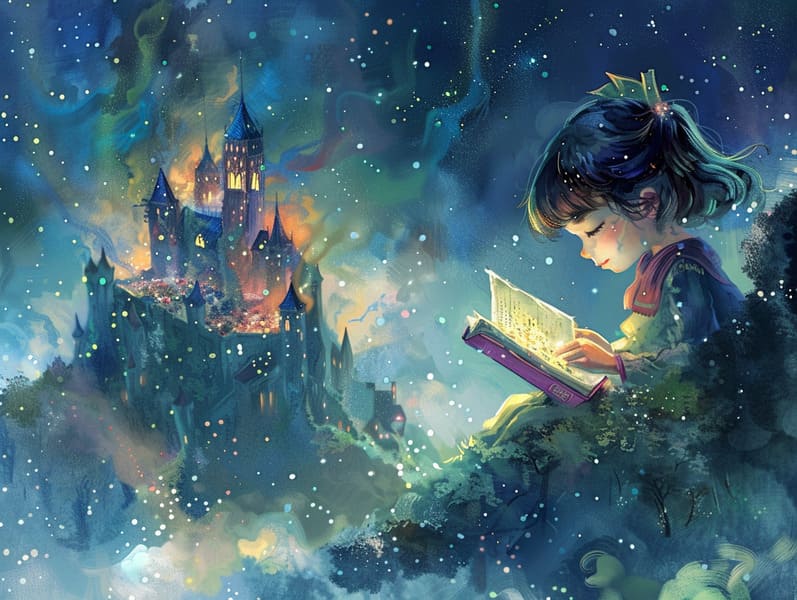The Birth of Classic Fairy Tales with the Unending Delight.
The Birth of Classic Fairy Tales with the Unending Delight.
Blog Article

Children's fairy tales have old origins. These tales have been conveyed from one generation to the next ages before they were ever published. They developed from a variety of civilizations, including European traditions. They were initially narrated among adults, often carrying themes and messages relevant to the societal norms and beliefs of the time.
The renowned Brothers Grimm, Jacob and Wilhelm Grimm, were among the first to gather and publish many of these beloved narratives. Their anthology, "Grimm's Folk Tales," included tales like "Cinder Maid," "The Story of Hansel and Gretel," and "Schneewittchen," which have since become pillars in the world of famous fairy tales. Similarly, the Danish author's imaginative tales, such as "The Little Mermaid," and "The Ugly Duckling," have gained the love worldwide, solidifying their place in the pantheon of classic fairy tales.
Even though they are old, classic fairy tales remain as important as ever, especially as children's bedtime stories. These magical stories are now available in different formats, including gorgeously illustrated books, delightful animations, and digital fairy tales.
Their persistent charm can be connected to several whimsical characteristics:
Crucial Morals: Traditional fairy tales often impart important moral lessons. Tales like "The Tale of the Boy Who Cried Wolf" teach the virtue of being truthful, while "The Story of the Tortoise and the Hare" point out the merits of resolve and unpretentiousness. These narratives offer young ones clear distinctions between right and wrong, developing their moral compass in a mild yet deep way.
Compassion and Knowledge: Classic fairy tales frequently include heroes facing challenges and struggles, fostering young readers to understand with their struggles and support their triumphs. For instance, "The Story of Beauty and the Beast" shows us the value of seeing inner beauty to recognize the real person of a character, nurturing perception and knowledge.
Cultural Comprehension: Many timeless fairy tales are rooted in the cultural contexts from which they bloomed. Exploring these stories can provide enlightening views into different ways of life, advancing a sense of global insight and knowledge.
Inventiveness and Imagination: The mythical elements in timeless fairy tales—talking animals—generate children’s creativity. These tales move readers to extraordinary realms, enhancing fantasy ideas and a sense of excitement that endures a lifetime.
Classic fairy tales are not only whimsical but also educational. They serve as delightful tools in cultivating various cognitive and affective skills in young ones. When old fairy tales are recited, they enhance linguistic abilities by introducing new language and complicated sentence structures. This practice also advances auditory perception and focus, as kids remain attentive, prepared to see what happens next.
Furthermore, deliberating the themes and characters of fairy tales can strengthen logical thinking and problem-solving abilities. The young are shown to find patterns, forecast, and figure out cause and effect. These reflections also facilitate the young communicate their thoughts and feelings, cultivating their emotional intelligence.
In today’s technological age, the accessibility of web-based fairy tales has made these narratives more reachable than ever. Web platforms and mobile apps provide wide arrays of children's fairy tales that can be viewed or played anytime, anywhere. Fairy tales told out loud are particularly common, giving an interactive method for young readers to relish these fascinating tales. Sound books and read-to-me stories transport characters and settings to life, often accompanied by captivating soundtracks and background music that boost the narrative journey.
The timeless allure of ancient fairy tales lies in their ability to adjust to current times while holding onto their fundamental ideas. Contemporary retellings of these tales often feature more varied characters and modern settings, making them relevant to today’s audience. However, the basic principles of boldness, humanity, and rightness remain unchanged, continuing to impact young listeners of all ages.
Ancient fairy tales also offer a sense of contentment and knowability. They present a well-ordered narrative with a evident read more beginning, middle, and end, often closing with the settlement of conflicts and the triumph of righteousness over wickedness. This certainty can be encouraging for young ones, introducing a sense of security in an constantly changing world.
Classic fairy tales continue to mesmerize and instruct new generations, maintaining their mystique and significance in modern society. As kids' bedtime tales, they render a perfect blend of fantasy and learning, cultivating moral values, empathy, and creativity. The accessibility of free fairy tales online and the popularity of fairy tales read out loud make sure that these old stories remain accessible to new generations.
By guarding and distributing these stories, we continue to cherish the rich tapestry of legends and cultural heritage. Whether you are enjoying a colorful picture book, accessing a electronic library, or hearing an audiobook, the mystique of old fairy tales is always within reach. These narratives illustrate of the everlasting ability of tales and its ability to tie us across eras and regions.
Whether you are accessing a colorful picture book, browsing a virtual collection, or listening via an read-aloud book, the captivation of bedtime fairy tales is always within reach.
These narratives teach us of the immortal magic of stories and its ability to bring us together across epochs and places, establishing a link that enchants and educates alike.